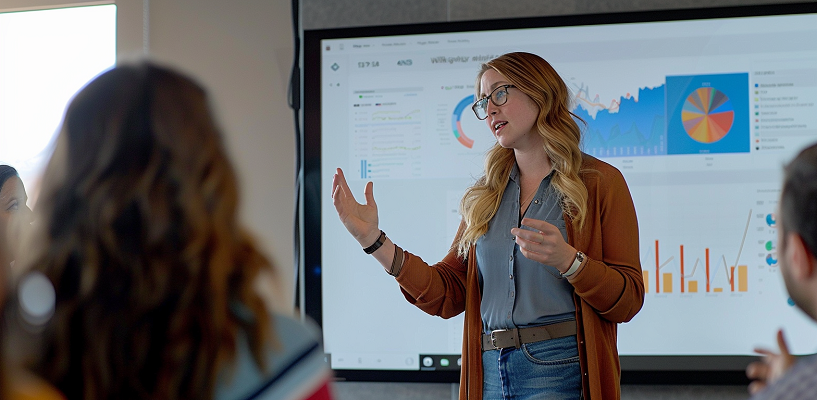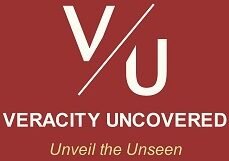- Home
- >>
- US
- >>
- Technology
- >>
- Software
- >>
- Power Up
Power Up

The Power Up Program has grown since its launch in 2022 in response to input from “students, Microsoft Partners, and clients.” Just after the launch, the Program had attracted over 22,000 participants from over 180 countries in 2022, and the numbers are still growing.
Acceptance into the Power Up Program will be determined by your “application data” after signing up. The enrollment of “non-technical” individuals is the main goal of this Program.
With the Microsoft Power Up Program, non-tech workers can effectively progress in a “low-code application development environment” (i.e., in Microsoft Power Platform). Low-code or “no-code” technologies will be used in 70% of new apps created by businesses by 2025, up from less than 25% in 2020 — as stated over “powerup.microsoft.com”.
A seven-week self-paced virtual learning Program called Power Up Maker features video-based learning goals that highlight “Power BI, Power Automate, and Power Apps.” Self-paced refers to a structure in which learners move through the content or assignments at their “own speed.” It is anticipated that each week, participants would dedicate an average of six hours to self-paced “study, webinars, and module tasks.”
You can develop your abilities and make new contacts as a member/part of the “Power Up Program Community.” Experts and peers can assist you with the curriculum and practical exercises by responding to questions you ask in the “Community” forums/boards. Community page — “powerusers.microsoft.com/t5/Microsoft-Power-Up-Program/ct-p/pup_community”.
You can also use a Mac device, but some of the course modules (such as Power BI Desktop, Power Automate Desktop, etc.) won’t work for you because some Microsoft applications are only compatible with Windows.
You will be able to create and develop “business solutions” using the Microsoft Power Platform using the material provided by this Power Up Program. Furthermore, Microsoft Power Platform also allows you for “data analysis, process automation, and solution development.”
A voucher for the registration of a Microsoft Power Platform “certification exam” will also be given to Program participants. You can progress or “discover new employment prospects” by getting a community-recognized badge by finishing the Program curriculum.
If you are already an expert in Microsoft Power Platform, you can volunteer to lead a session, interact with aspiring specialists by answering their questions, or “share your expertise and professional experiences.” Professionals who enlist as volunteers are known as “Power Up Champs.”
It has been demonstrated that the adoption of low-code or no-code platforms and apps has improved user “workload and work enjoyment” by 83 percent and morale by 80 percent, respectively — as discussed with “low code trend report 2022” at “microsoft.com/en-us/power-platform/blog/2022/05/24/low-code-trend-report-2022-building-a-learning-culture-on-a-low-code-platform/”.
App in a Day -
From a Feb 2024 update; participants in the Microsoft Power Up Program have the option to register for partner-led virtual workshops called “App in a Day” (AIAD) as an extra perk. Attending these sessions can help learners improve their knowledge of “application development” and how to use the Power Platform to solve business problems.
“Advaiya, Braintree, Almato AG, Koenig Solutions, PowerApps 911, Kaispe, Pragmatic Works, and Smart Consulting” are the partners offering these AIAD workshops.
Power Up Program schedule -
The “six modules” of the video-based Power Up curriculum, in 2024, include an introductory course and the ultimate Power Up Challenge. By the “last day” of the batch period, learners have at least seven weeks to finish the following topics and the Power Up challenge.
| Power Up Maker Course outline | |
|---|---|
| Module | Recommended timeline |
| Starting out and the basics of Power Platform | Week 1 |
| Using Microsoft Dataverse to Build Model-Driven Apps for School | Week 1 |
| For a school library, create a Canvas app | Week 2 |
| Utilize Power Automate cloud flows for creating school library workflows | Week 3 |
| Use Power BI to visualize data from school library | Week 4 |
| Power Up Challenge | Week 5-7 |
After completing the practical exercises and learning objectives, participate in live “Q&A sessions” to get answers to any questions you may have.
At the end of the Power Up Maker course, students apply their newly acquired skills to design a “business solution” in the Power Up Challenge.
It is not possible to download the course materials.
Let’s define some common terminology to understand Microsoft applications that are used throughout the course.
Power Platform -
A low-code platform called “Microsoft Power Platform” helps developers quickly create customized end-to-end business applications. “Power Apps, Power BI, Power Automate, and Power Pages” are its five product categories. You can utilize each “category” separately or in combination.
Microsoft Dataverse -
The “data repository” for Power Platform and Microsoft business apps is called Microsoft Dataverse. Structured and unstructured data can be stored in one or more settings/environments, depending on your needs. Dataverse enables the storing of many kinds of data in tables that can be “customized.” A cloud-based storage solution is offered by Dataverse.
Model-Driven Apps -
With form, view, and relationship integration that works flawlessly with your tables, Model-Driven Apps let you quickly “create apps” from your Dataverse data. The “user interface” (UI) of Model-Driven Apps has been upgraded to conform to the most recent version of the Microsoft Fluent Design System.
Adding components to your apps rapidly is the main goal of the Model-Driven App “design strategy.” Charts, forms, views, and dashboards are some of these “components.” Using an “app designer tool,” components are connected to the table(s) under Model-Driven App design. “Relationships” also join tables in a way that makes it possible to navigate between them and prevents redundant data entry.
Canvas App -
In Microsoft Power Apps, create a business application from a “canvas” without writing any code/program. Just like you would with a PowerPoint slide, you may design the app by dragging and dropping “components” onto a canvas.
The ability of canvas apps to quickly and securely integrate with hundreds of different systems and apps via their “native connector library” is what makes them different. Users can utilize your Canvas app in “Teams, SharePoint, Power BI, and browsers” when you share it, and they can also embed it in other apps.
Power Automate -
Using “integrated or bespoke connectors,” Power Automate may be used to automate processes and coordinate activities across several services. You may make desktop or cloud flows using Power Automate. If you want your automation to be “manually triggered, run when certain events happen (such when a record is generated), or scheduled to run at a specified time,” construct a cloud flow.
Power BI -
A group of “software services, applications, and connectors” called Power BI come together to transform your disparate data sources into cohesive, interactive, and visually stunning insights. With “Power BI,” you can view and identify what’s important, connect to your data sources with ease, and share that information with whomever you choose.
The three widely used components of Power BI — Power BI “Desktop, service, and Mobile apps” — all function together to enable you to generate, distribute, and use business insights.
Link to official page of “Power Up” Program: https://powerup.microsoft.com/
That’s all friends.
Ads Section

